
MAMMALS
Warm-Blooded... the Only Animals with Hair!

MAMMALS
Warm-Blooded... the Only Animals with Hair!
Mammals can often be identified by the presence of hair on their bodies; indeed, mammals are the only animals on earth with real hair. But that’s far from their only defining feature! Mammals are warm blooded, give birth and nurse their young (with a few exceptions), and their brains possess a neocortex. Some of the first true mammals appeared about 160 million years ago. Today, they make up the smallest group of vertebrate species on the earth, but they contain the largest known species to ever live (the Blue Whale) and many of the smartest!
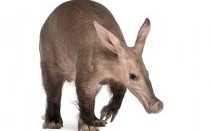 Aardvark
AardvarkAardvarks are nocturnal, burrowing mammals, recognizable by their characteristic pointy snouts and ears. The last known…
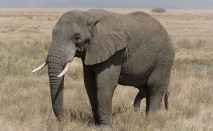 African bush elephant
African bush elephantThese charismatic giants are the largest living terrestrial animals, with an average height between 9.2 and 10.8 feet…
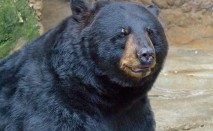 American black bear
American black bearThis medium sized bear is the most common and widespread of all bear species. They generally prefer to live in the forest…
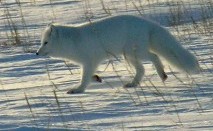 Arctic fox
Arctic foxThis small species of fox is native to the Arctic region of the Northern Hemisphere. Its dense coat, which is white in…
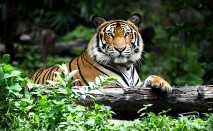 Bengal Tiger
Bengal TigerWhile it is the most common subspecies of tiger, the Bengal Tiger is still endangered, ranging only in India, Nepal, Bangledesh,…
 Black-headed spider monkey
Black-headed spider monkeyThe black-headed spider monkey is an arboreal, diurnal species of primate native to Central and South America (New World…
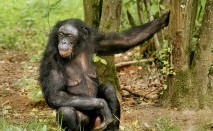 Bonobo Chimpanzee
Bonobo ChimpanzeeThese endangered great apes are one of two species making up the genus Pan, the other being the common chimpanzee (Pan…
The Brazilian, or South American, tapir is one of five species in the tapir family. They are large mammals– adults can…
Capybaras are the largest rodent in the world and can weigh in excess of 100 pounds! They are native to South America…
 Cattle
CattleThese large ungulates have been domesticated for more than 10,000 years. All the 1.3 billion cattle in the world are thought…
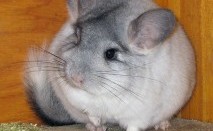 Chinchilla
ChinchillaThe long-tailed or Chilean chinchilla are popular as pets and in the fur trade, but their wild counterparts are critically…
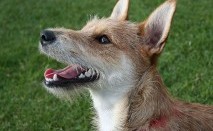 Dog
DogDogs have been domesticated by man longer than other species: genetic evidence tells us that the modern domesticated dog…
 Domestic cat
Domestic catDomestic cats are widely thought to have descended from the African wildcat (Felis sylvestris lybica), a species first…
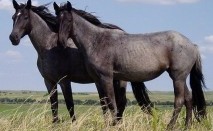 Domestic Horse
Domestic HorseThe horse we know today evolved from a small, multi-toed creature that lived 45-55 million years ago. Humans first domesticated…
The Eastern cottontail is one of the most common and widespread species of rabbit in North America. They prefer to live…
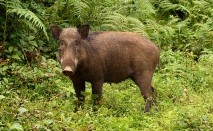 European wild boar
European wild boarAlso known as the Eurasian wild pig, these versatile omnivores are native to Eurasia, North Africa and the Greater Sunda…
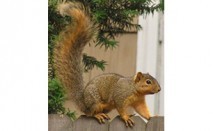 Fox squirrel
Fox squirrelThe fox squirrel is the largest species of squirrel native to North America. They thrive in forests or urban neighborhoods…
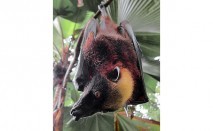 Giant golden-crowned flying fox
Giant golden-crowned flying foxThis species is a rare “mega-bat,” one of the largest species of bats in the world. They are herbivores with a keen…
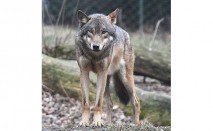 Gray wolf
Gray wolfThis species of canid is also known as the timber wolf or western wolf. They are native to wild and remote areas of North…
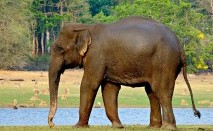 Indian elephant
Indian elephantThe Indian elephant is one of three subspecies of the Asian elephant and are native to India, Nepal, Bangladesh, Bhutan,…
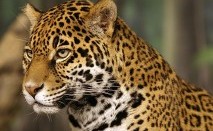 Jaguar
JaguarThe jaguar is the largest wild feline in the Americas and ranges from the southwestern United States all the way down…
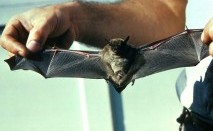 Little brown bat
Little brown batOne of the most common of North American bats, this species belongs to the genus known as “mouse-eared bats.” Little…
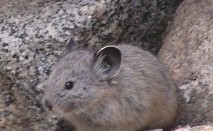 Pika
PikaThis species of pika is active during the daytime and found in the mountains of Western North America. They are small,…
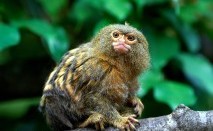 Pygmy marmosets
Pygmy marmosetsPygmy marmosets (Cebuella pygmaea), also known as pocket monkeys or finger monkeys, are native to South America. They…
 Raccoon
RaccoonThese medium sized mammals are native to North America and are known for their intelligence, facial mask, and dexterous…
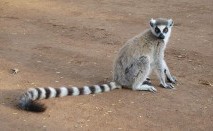 Ring-tailed lemur
Ring-tailed lemurLike all lemurs, this easily recognized primate is native to the island of Madagascar. They are omnivorous, diurnal, and…
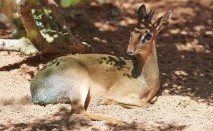 Royal Antelope
Royal AntelopeDespite its larger than life name, the royal antelope (Neotragus pygmaeus) is the smallest of all antelopes. Growing up…
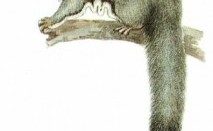 Sugar Glider
Sugar GliderThese small, arboreal marsupials are able to glide through the air, much like flying squirrels. They inhabit northern…
 Virginia opossum
Virginia opossumThese solitary, nocturnal marsupials are found in North America north of Mexico. They are omnivores and often a familiar…
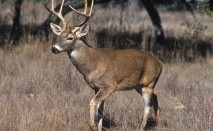 White-tailed deer
White-tailed deerThis deer species is widespread throughout eastern and central North America, Central America, and parts of northern South…
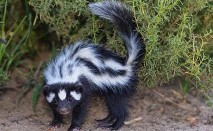 Zorilla
ZorillaFor those of you reading this in North America, the zorilla (Ictonyx striatus), or striped polecat, may look like a skunk.…
Many people associate playing dead with the opossum – that’s where the term “playing opossum” comes from, after all. But something you might not know is that when an opossum feigns death, it really goes all out! Not content with merely closing its eyes and laying down, the opossum begins drooling profusely as if ill or even rabid, releases a putrid, greenish fluid from its anal glands that makes it smell like a decaying corpse, and may even mimic rigor mortis after fainting! This is quite the elaborate routine, but it isn’t conscious: when an opossum plays dead, it has actually gone into shock due to stress.
 Discover Animals is a web-based educational resource offered by the NAIA
Discover Animals is a web-based educational resource offered by the NAIA